
Populus is a genus of 25–30 species of deciduous flowering plants in the family Salicaceae, native to most of the Northern Hemisphere. English names variously applied to different species include poplar, aspen, and cottonwood.
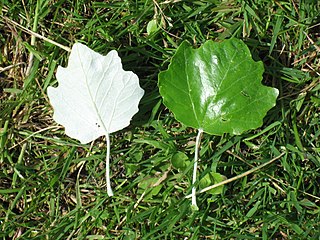
Populus section Populus, of the Populus (poplar) genus, includes the aspen trees and the white poplar Populus alba. The five typical aspens are all native to cold regions with cool summers, in the north of the Northern Hemisphere, extending south at high altitudes in the mountains. The White Poplar, by contrast, is native to warmer regions, with hot, dry summers. These trees are all medium-sized deciduous trees ranging 15–30 metres (49–98 ft) tall.
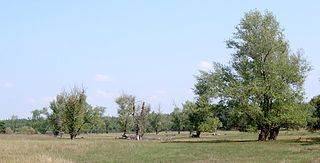
Populus nigra, the black poplar, is a species of cottonwood poplar, the type species of section Aigeiros of the genus Populus, native to Europe, southwest and central Asia, and northwest Africa.
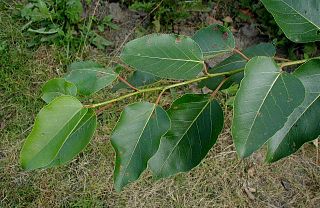
The balsam poplars are a group of about 10 species of poplars, indigenous to North America and eastern Asia, distinguished by the balsam scent of their buds, the whitish undersides of their leaves, and the leaf petiole being round in cross-section. They are large deciduous trees, 30–60 m tall, with leaves with a rounded base, pointed apex, and a whitish waxy coating on the underside of the leaf; this latter distinguishes them from most other poplars. The name is derived from the pleasant balsam smell of the opening buds and leaves in spring, produced by a sticky gum on the buds which also helps protect the buds from insect damage. The balsam poplars are light-demanding trees that require considerable moisture. Balsam poplars are tolerant of very cold conditions, occurring further north than other poplars except for the aspens. The poplars in Southern California are tolerant of 100 plus degree heat. They grow along dry washes and dry riverbed's. The dry washes and dry riverbeds will have flowing water when it rains sufficiently. Their leaves hang down and are at an edge to the sun. This may be another factor why they can take the high heat. Their leaves tremble in the slightest breeze like the quaking aspen
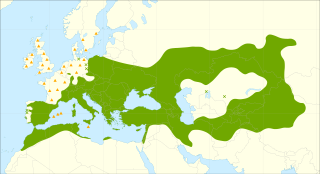
Populus alba, commonly called silver poplar, silverleaf poplar, or white poplar, is a species of poplar, most closely related to the aspens. It is native to a region spanning from the Atlas Mountains of Africa, through most of South and Central Europe, into Central Asia; it has been introduced to many temperate, moist regions worldwide. It grows in moist sites, often by watersides, in regions with hot summers and cold to mild winters.
White poplar is a common name used to refer to several trees in the genus Populus, including:
Festive ecology explores the relationships between the symbolism and the ecology of the plants, fungi and animals associated with cultural events such as festivals, processions, and special occasions. Examples of topics are given below.

Populus tremuloides is a deciduous tree native to cooler areas of North America, one of several species referred to by the common name aspen. It is commonly called quaking aspen, trembling aspen, American aspen, mountain or golden aspen, trembling poplar, white poplar, and popple, as well as others. The trees have tall trunks, up to 25 metres tall, with smooth pale bark, scarred with black. The glossy green leaves, dull beneath, become golden to yellow, rarely red, in autumn. The species often propagates through its roots to form large clonal groves originating from a shared root system. These roots are not rhizomes, as new growth develops from adventitious buds on the parent root system.
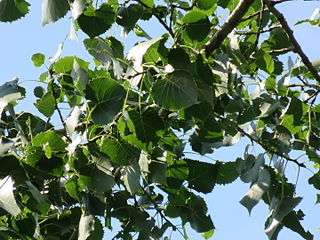
Populus deltoides, the eastern cottonwood or necklace poplar, is a species of cottonwood poplar native to North America, growing throughout the eastern, central, and southwestern United States as well as the southern Canadian prairies, the southernmost part of eastern Canada, and northeastern Mexico.

Populus tremula is a species of poplar native to cool temperate regions of the Old World.
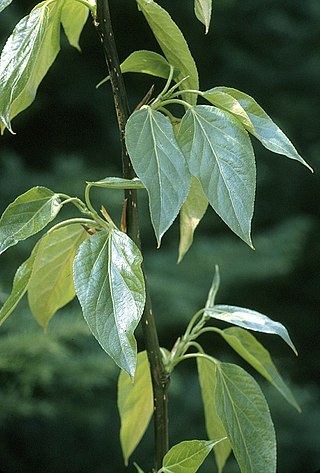
Populus balsamifera, commonly called balsam poplar, bam, bamtree, eastern balsam-poplar, hackmatack, tacamahac poplar, tacamahaca, is a tree species in the balsam poplar species group in the poplar genus, Populus. The genus name Populus is from the Latin for poplar, and the specific epithet balsamifera from Latin for "balsam-bearing".

Populus heterophylla, also known as downy poplar, swamp poplar and swamp cottonwood, is a large deciduous poplar belonging to the Populus genus of the family Salicaceae. This species can grow on sites that have too much water for other native poplars. On the IUCN Red List this species is listed as "least concern".

Populus fremontii, commonly known as Frémont's cottonwood, is a cottonwood native to riparian zones of the Southwestern United States and northern through central Mexico. It is one of three species in Populus sect. Aigeiros. The tree was named after 19th-century American explorer and pathfinder John C. Frémont.
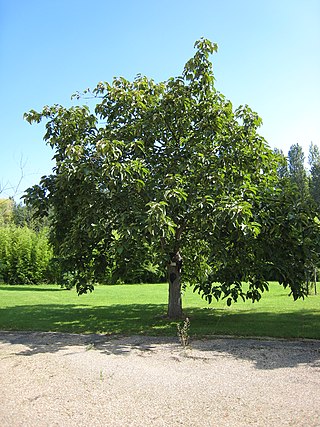
Populus lasiocarpa, commonly called the Chinese necklace poplar, is a species of poplar native to humid forests of China. It is closely related to Populus wilsonii, Wilson's poplar.
Populus adenopoda, known commonly as the Chinese aspen, is a species of poplar found in the subtropical regions of China. The trees can reach a maximum height of 30 metres, and occur on mountain slopes at elevations of 300–2500 metres. Wood from the trees is used in construction and furniture production, as well as timber, farm tools, and wood pulp.

Populus euphratica, commonly known as the Euphrates poplar, desert poplar, diversiform-leaved poplar, or poplar diversifolia, is a species of poplar tree in the willow family.

Populus × canescens, the grey poplar, is a hybrid between Populus alba and P. tremula. It is intermediate between its parents, with a thin grey downy coating on the leaves, which are much less deeply lobed than the leaves of P. alba. It is a very vigorous tree with marked hybrid vigour, reaching 40 metres tall and with a trunk diameter over 1.5 m (5 ft) – much larger than either of its parents. Most trees in cultivation are male, but female trees occur naturally and some of these are also propagated.
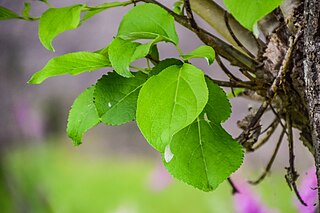
Populus suaveolens, called the Mongolian poplar, Korean poplar and Japanese poplar, is a species of flowering plant in the genus Populus, native to all of northern Asia, the Korean peninsula, the Kurils, and northern Japan. It is a tree reaching 30 m.
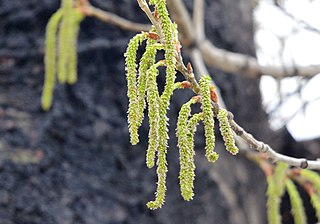
Populus × tomentosa, commonly known as Chinese white poplar or Peking poplar, is a species of tree in the family Salicaceae. It is found across northern and eastern China, and has been introduced to the US state of Louisiana.
















